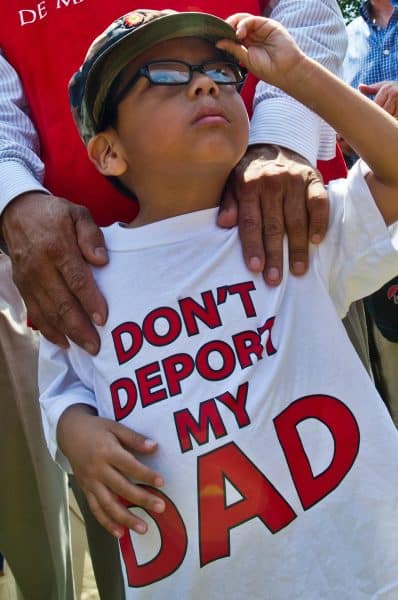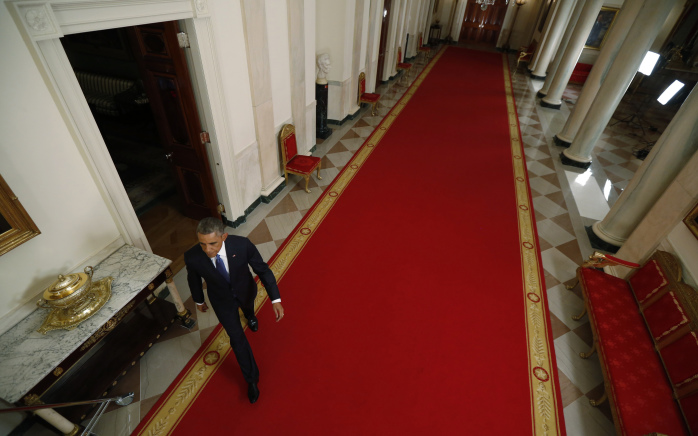WASHINGTON, D.C. — The Obama administration in recent months has rolled out a new but little-known program that allows Central American immigrants who reside legally in the United States to bring family members to the country.
The new policy applies to children from Honduras, Guatemala and El Salvador who face harm from violence and other dangers. Admission is also possible for spouses and grandchildren of immigrants in some cases.
The U.S. State Department and U.S. Citizenship and Immigration Services implemented the program in December. Vice President Joe Biden first announced it at a summit on economic development with Central American leaders in November, but the administration has barely promoted the initiative domestically aside from posting announcements and details on agency Web sites.
Officials say the change is necessary to prevent children from risking their lives to cross the border and protect them from exploitation by smuggling networks.
The new policy applies exclusively to Central Americans because of a 2008 anti-trafficking law that emphasizes protection of minors from that part of the world.
Under the reunification program, at-risk children can qualify for refugee status, putting them on a path for green cards, resettlement assistance and eventually U.S. citizenship. Those who don’t meet the requirements can become eligible for parole, which allows them to reside in the United States without the other benefits.
An official for the State Department, which shares responsibility for the program along with U.S. Citizenship and Immigration Services, said the policy change provides a “safe, legal and orderly alternative to the dangerous journey that some children were undertaking to join parents.”

The new refugee program has garnered relatively little attention compared other executive actions President Barack Obama has taken in recent months. Some immigration advocates were unaware of the plan until federal officials e-mailed them about it in early February, according to a Boston Globe article that month.
Critics say the president shouldn’t have implemented the reunification program without legislation, but officials contend that the administration announced its intentions in an August 2014 report to Congress and when Secretary of State John F. Kerry and Homeland Security chief Jeh Johnson briefed lawmakers about proposed refugee admissions in September.
Immigrant parents can apply for the refugee program if they have legal status in the United States — including temporary legal status — or if the government grants them deferred action under the suspended executive actions that Obama announced in November.
The children must go through interviews with USCIS officers in their native countries to determine whether they qualify as refugees and undergo DNA testing to prove a relation to the parents, in addition to completing security checks and obtaining medical clearance.
The State Department said 329 individuals had applied for reunification as of Thursday. The agency said no applications have been approved yet.
Unaccompanied children from Central America began streaming to the United States at an alarming rate in 2012, around the time Obama announced plans to defer deportations for certain immigrants who were brought to the country illegally.
Between 2012 and 2014, the number of immigrant minors apprehended at the border more than quadrupled, rising from 13,600 to more than 60,000.
The sudden wave of undocumented children took a heavy toll on federal resources and caught the government unprepared, but the surge has slowed considerably in recent months. Border Patrol agents said many immigrants misunderstood the 2012 deferred-deportation policy, according to a previous Washington Post article.
Recommended: Fix the immigration crisis at its root
The administration took steps to curb the influx, including building new processing centers, increasing border security and urging Central American leaders to discourage people from making the trek north.

Obama announced plans in November to defer deportation for an estimated 4 million undocumented parents of U.S. citizens and legal residents who have lived in the country for at least five years.
Conservatives lashed out at the administration for changing major immigration policies without congressional approval. The White House contends that Obama used his executive authorities in the same manner as past presidents, including Republicans.
A federal court ordered a temporary hold on the program in February after 26 Republican-run states challenged the executive actions. The Justice Department is appealing the decision, but Obama has agreed to comply with it.
© 2015, The Washington Post

